Wheels are one of the more broken components on a bicycle so it’s important to seek out the best touring wheels. You need reliability and strength when it comes to each and every aspect of a touring bike wheel and below we will discuss them all.
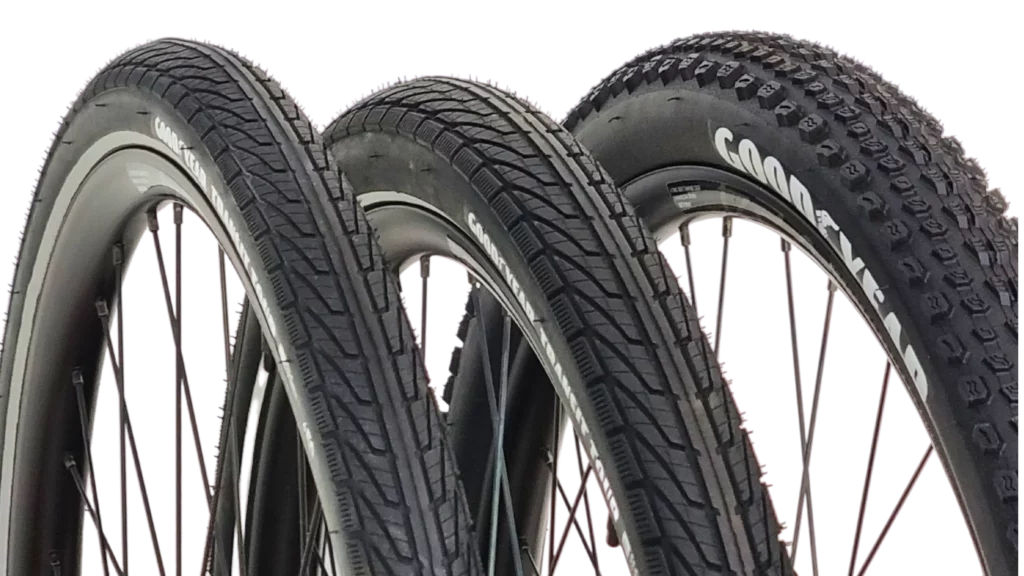
About Wheels
Our cycle touring wheels hold us up and roll us over the surface. They take the initial impact from the road and are designed to absorb much of the shock. Special spokes, rims and tyres are made for loaded bikes expecting to travel basically anywhere. Strength is especially important because damaging any of them could be such an inconvenience if you are travelling.
‘Overbuilding’ wheels (making them more massive and heavy) is not a solution as it removes the shock absorption qualities, making it a more jarring ride.
Weight is an issue because the energy-demand of adding a gram to the wheel perimeter (tyre/tube/rim) is tripled due to the need to rotate this extra mass. But a few hundred extra grams in the wheels can prevent a lot of trouble.
The quality of the wheel building is also very important. A terrible wheel can be made from the best components, by poor wheel building. Spoke tensions need to be quite high and all spokes should have the same tension as the other spokes on that side.
Tyres
The touring bikes we are talking about are designed for daily transport and for long distance travel, which includes carrying loads. So a little extra tyre weight is something to compromise on in favour of the other things that cycle touring wheels offer.
Another issue is that of spare parts availability around the world. This sometimes gets alluded to as if it is acknowledged that bikes ought to be designed so they can have bits replaced anywhere on the planet. But it is not. If you are riding the Eurovelo routes you are not far away from any spare part. But if you are in the Australian outback, most of India, Africa, South America or central Asia there is a whole list of things you can not readily get. This means…
- have high quality components to start with
- take great care of your bike (don’t allow people to go for a ride on it for example),
- carry your own spares for a few things (eg brake pads), and tools and
- have access to the internet to get information
- Remember, you can get things sent fast these days. It is possible to get anything.
Many long-distance riders carry a tyre, mostly a fold-up one that is lighter because it does not use wire for beading and is compact. But if the tyres don’t fail and last vast distances there is no need to be able to find them in all corners of the globe. Some people leave a spare with a friend, ready to send.
Referring to Tyre Sizes
Rather than only rely on nominal diameter figures like 700, 28”, 29’r, 26”, 650B etc, it is good to know the BSD (bead seat diameter) number. This is the cross section as indicated in this diagram. We refer to this as ISO or ETRTO. They are the same thing.
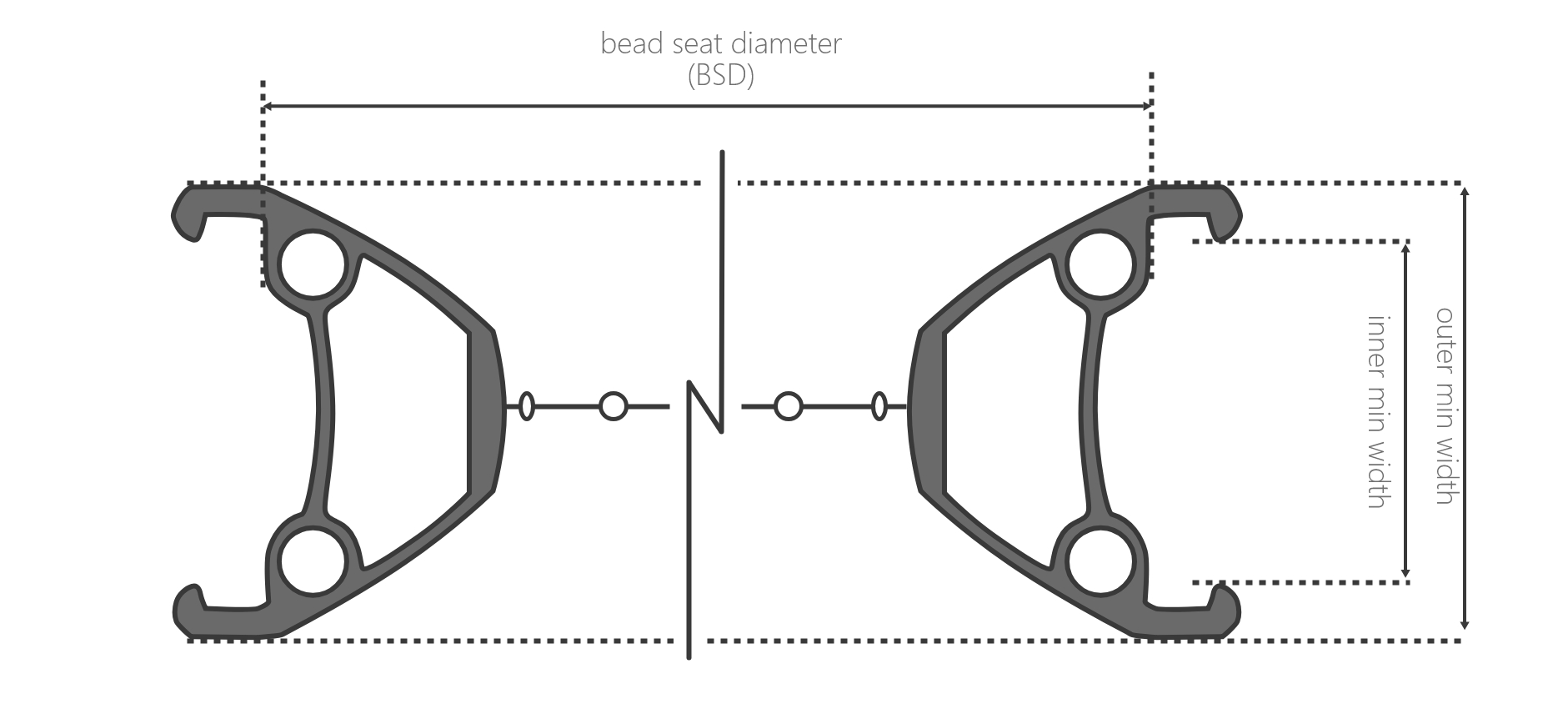
700C has a BSD of 622mm. This is the same as on the Northern European designation of 28” and the modern MTB size called 29er.
584 is the BSD for the 650B size we mainly see on some French and Japanese bikes. More recently adopted in the MTB world and renamed yet again – this time as 27-1/2”. Vivente started to use 650B for tyres wider than 47mm.
559 is the BSD for most MTBs (26”) prior to the development of the 29er.
Tyre Width, Air Pressure and Rolling Resistance
Once your bum gets used to sitting on a bike seat, with a good saddle, good riding pants, a cr-moly bike frame and well-built touring bike wheels, you don’t need low tyre pressure just for comfort. At lower pressures the rolling resistance of the tyres on the road increases. About 60psi is both comfortable and efficient for on-road touring although just how efficient varies a lot between different tyres.
Tour de France riders output 2-300 watts for about four hours. Touring riders, unless in a great hurry, output closer to 100 watts. There are a few tyres in this width that have been measured to be under 20 watts rolling resistance (each). Goodyear Transit Tour with 3mm kevlar liner is one. Schwalbe AllMotion is another.
With more narrow tyres, on a touring bike with luggage, the risk of damaging the rims arises. If it happens, that is likely to be a serious problem. 37mm-40mm has long been the on-road, long distance, width of choice.
2” tyres are not for on-road round-the-world riding but nor is the touring set-up with 40mm tyres and 60psi, best suited to rugged, rocky terrain. Riding through rough country is easier and faster on lower pressure. You can only achieve this with wider tyres. You don’t waste energy bouncing around. Your tyres conform to uneven ground. Knobs on the tyres stop you sliding out in corners. This all allows you to move faster in particular terrain.
The appeal of wider tyres is not confined to rough conditions. There are some wide tyres that don’t have much “grip” but still offer the sense of security that comes from having this much ground contact. For example the Schwalbe G-ONE AllRound in 2-1/4” (57mm) and 2.80” (70mm) have a tread that is easy to ride on sealed surfaces.
There is also a case for a “bulletproof” tyre. One that resists cuts and punctures and lasts for a long time. Ther Schwalbe Mondial may be the best example of this.
Some bikes offered as being for off-road travel, don’t have room for mudguards (fenders) or much rear luggage-carrying ability. We prefer to include mudguards on all the bikes we make.
Going Tubeless
The attraction of tubeless is that they are virtually free of punctures. That bit of glass, or a small sharp bit of wire, or a thorn or catshead. Any one of them can bring you to a halt if you have normal bike tubes. And it may be very inconvenient.
Tubeless uses, as in the car and motorcycle worlds, a liquid sealant in the tyre. There is a separate valve.
Wider tyres, like the G-ONE AllRound and so many others, do not have Kevlar lining. Therefore they are not particularly puncture resistant. Plus they have a wider tread making them more prone to punctures than a 40mm tyre with a 3mm Kevlar lining.
Whether you run 40mm tyres as tubeless is less an issue. But with wider tyres, tubeless makes the most sense.
There is more maintenance. Air leaks out more than with a bike tube so the pressure should be monitored. Don’t allow it to go too low or the seal may be broken, allowing sealant to leak out. Also, when flying, don’t let the tyres down very much. Overzealous check-in staff may ask if you have let your tyres down. Yes, you have, but not right down, or you’d have a mess when you landed.
If you are not riding regularly, you should spin the wheels at least weekly to stir the sealant up and stop it forming a blob.
Over time sealant needs to be topped up. Hence you need to travel with sealant. After this is done, to reseal the tyre you need a compressor or a big floor-pump. You can manage at a servo but want to carry your own free air adapter.
You are going to carry a spare tube anyway, so it begs the question of ‘why bother’. The tyres do become more supple, so it’s nicer to ride. But it’s really the puncture-proofness provided to wider tyres that are otherwise more vulnerable.
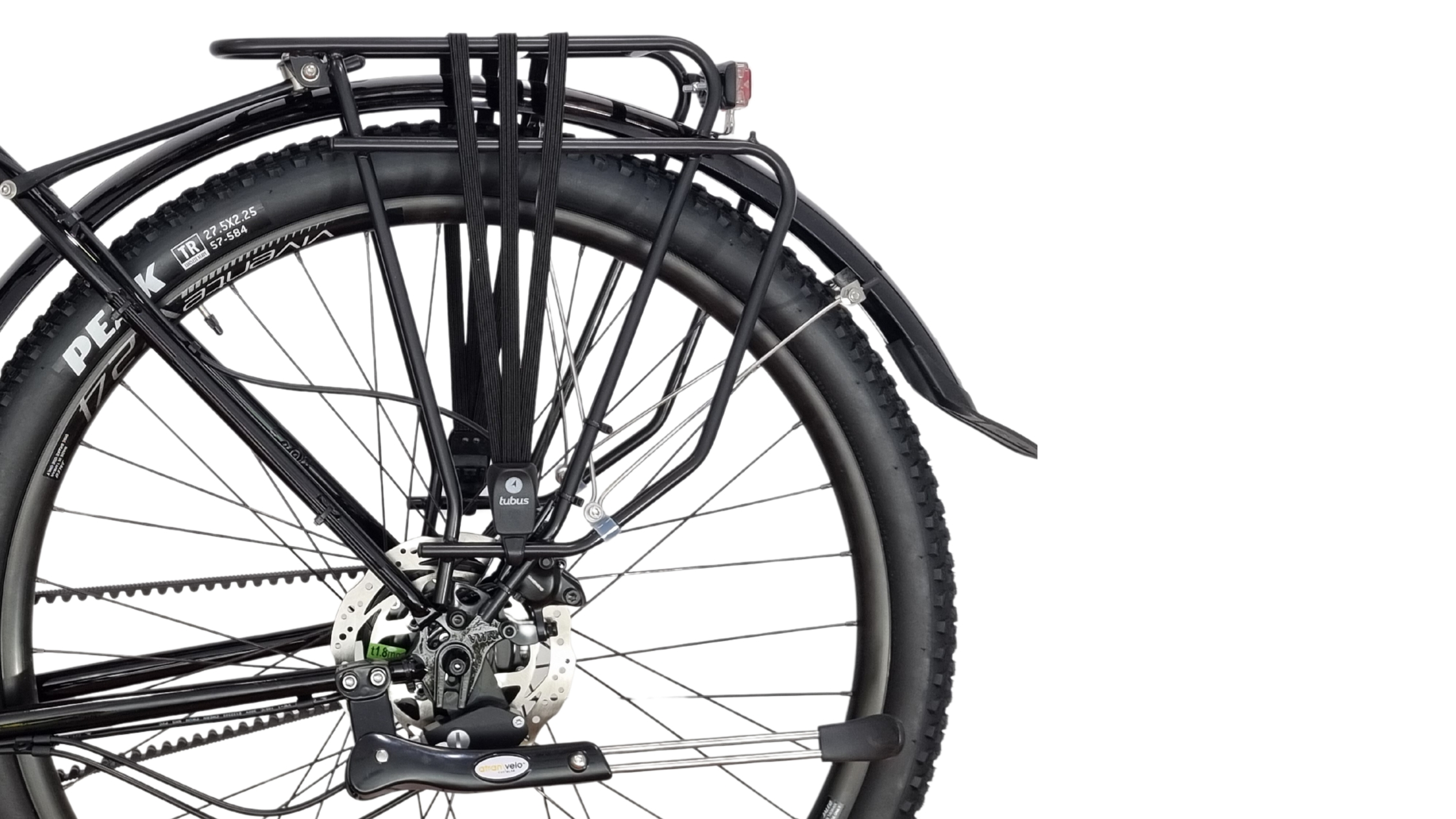
Tyre Boot As An Emergency Repair
Made from a bit of motorbike tube, this is a lightweight alternative to carrying a spare tyre. It should be a width that suits your tyre width so it will wrap around but not overlap. You just slide it in and then finish putting the tyre on. In the example below, I used the tyre for many thousands of km after I installed the boot, even though I damaged it coming down the Western Ghats on an old gravel track.
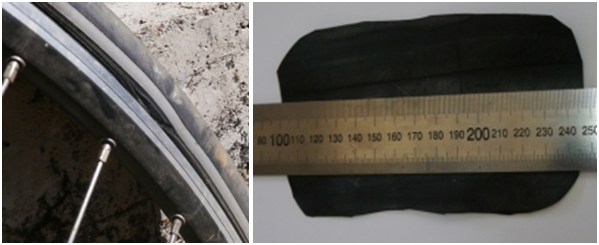
Rims and Spokes
Over the years some better rims for touring have come onto the market. E-bike development in Europe has brought with it slightly wider rims that are able to run wider tyres. They are made to carry heavier loads and make for great touring bike wheels.This is an area where reducing weight carries a risk. Around 600 gms per rim is a “safe” rim-weight for long-distance travel. As long as the tyre pressure is not allowed to get too low. Part of the strength comes from width. A 24mm ID rim at a 600gms is a little stronger than a 22mm ID rim.
Using hydraulic disc brakes instead of rim brakes (sidepull, centrepull, V-brake) removes the problem of rims wearing out. We had to live with that up till about 20 years ago.
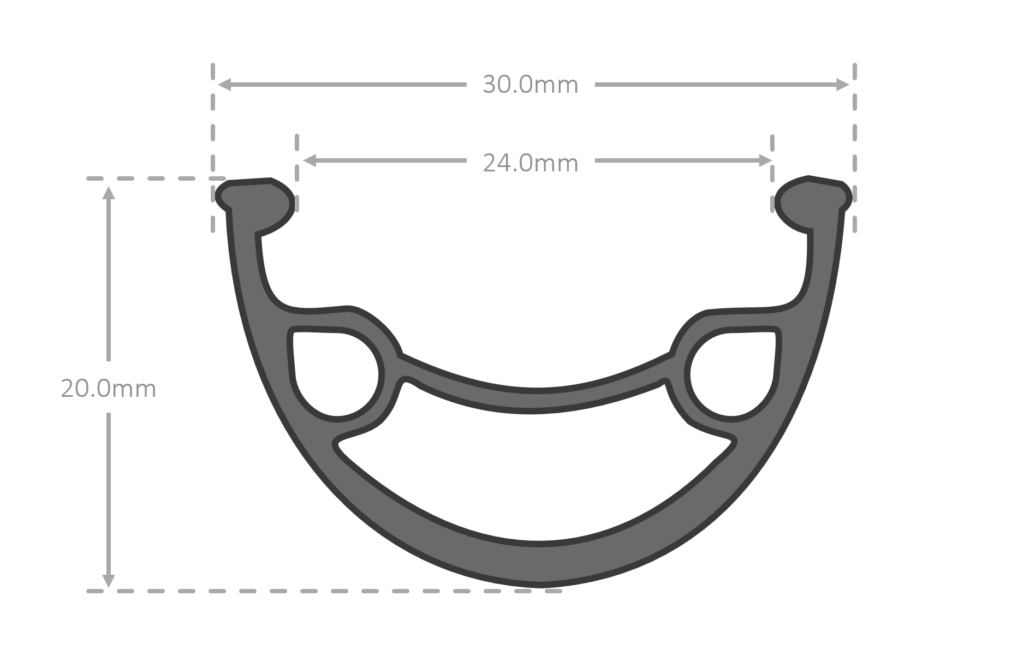
Extensive test-riding of 32 spoke wheels, properly built, and with top-line spokes has proven that 32 spoke wheels on the margin, do work well on touring bikes. However, there are a few cases where having 36 spokes is better, particularly for heavier loads. The eight extra spokes (on a 36 spoke bike) weigh only 50 grams.. Lighter riders don’t need them but heavier riders can benefit.
As mentioned, the quality of wheel building is very important. Spokes break for three key reasons.
- Inadequate support at the bend — the hub flange is too narrow or spoke bend too long so the bend lacks support.
- Inadequate tension in some (or many) spokes leads to shock loading on the spoke bend/head as the spokes tension and relax (completely) throughout the rolling of the wheel.
- Inconsistent tension — Any higher tension spoke will have to manage the bulk of the wheel’s load throughout the rolling cycle.
DT Swiss and Sapim are said to make the best spokes. Of the two, Sapim makes the spokes with the most consistent bend dimensions and for this reason are recommended by Rohloff. They say more consistent dimensions reduces the chance of damage to hub flanges.
 Australia
Australia New Zealand
New Zealand Other
Other